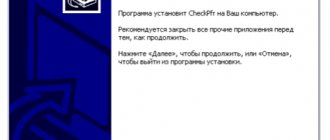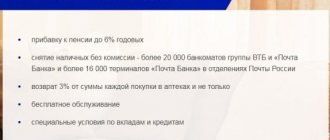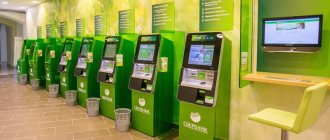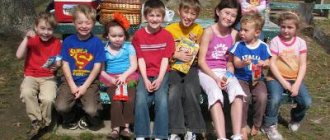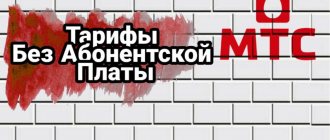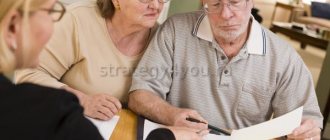Why does a pensioner need a computer?
It's easier to say why it's not needed. Nowadays, it seems, almost everything is done using a PC and the Internet. A pensioner will need computer literacy skills to:
- search for the information you need quickly and for free (excluding the cost of the PC itself and the Internet, of course);
- to pay for utilities online, rather than stand in queues for hours;
- to communicate with family and friends online and for free - for example, via Skype or on social networks;
- to keep a blog - an analogue of diaries, write memoirs, share useful tips with descendants;
- to store memorable photographs in a convenient digital archive;
- to listen to music and watch movies. If you sometimes can’t find old and rare records in stores, you can find everything on the Internet!
- to make money on the Internet. We wrote about ways to earn money for retirees in this article;
- to make an appointment at the clinic, buy tickets online for travel, theaters, exhibitions.
All this is possible, you just have to discard stereotypes and take a step towards something new.
Popular myths about computers and the Internet
- It's bad for your health. The eyes will go blind, the back will not straighten, and so on. Of course, if you sit at the computer from morning to evening, you can ruin your health. But nothing will happen in a couple of hours - you won’t even feel how they fly by!
- This is harmful to the psyche. And in general, the Internet is dulling. Of course, it's mind-numbing if you watch all sorts of nonsense all day long. But you won't do that! Now the Internet is a repository of knowledge of the entire history of mankind. Here you can read books, take virtual tours of museums around the world, watch photographs and videos of different countries and cities, study and educate yourself.
- It’s difficult—it’s hard to learn new things when you’re old. But that’s not true! In fact, everyone can master the basics of computer literacy. Next, we will give examples of courses and programs where everything is explained literally on the fingers.
- It is expensive. A simple netbook (small laptop) costs around 10 thousand rubles. If you can’t pull it off yourself, ask your children and grandchildren for a gift, they will only be delighted with your activity and modernity.
- I’m not used to it (la), it’s easier for me the old fashioned way. Well, you once got used to using cell phones and appreciated their convenience! Believe me, the computer will be even more useful in life - it has a lot of useful functions.
How can an elderly person master a computer and the Internet?
There are several learning paths:
- courses in groups;
- online courses and services;
- self-study using books and video lectures.
First of all, a pensioner may be afraid of the new, believing that he can cope without the Internet. In fact, training takes little time. The main thing is to interest an older person and tell them about new opportunities.
Why do pensioners need computer courses:
- Active mental activity is resumed, which prevents many mental and brain diseases.
- This is a quick way to find answers to questions, from a pie recipe to a television program.
- The ability to independently use technology will improve an older person's mood, self-esteem and help relieve boredom.
- Now you can get a job, get a promotion, work online.
- If friends and relatives are at a great distance, communication via Skype will help brighten up the separation.
Attention! During training, you should not shout or swear at an elderly person. You need to correctly answer repeated questions and, if necessary, write down step-by-step instructions on a piece of paper.
How to make learning comfortable:
- Designate a personal computer that will belong only to the pensioner. Then he will be able to organize all the folders on his own and will be more confident in pressing buttons.
- There should be a minimum of programs on the desktop. While the student is mastering the standards, he does not need fancy games or applications.
- Create a browser shortcut on your desktop. All necessary windows should be pinned in the browser. This could be news, Yandex search engine, YouTube, mail.
- Perhaps an older person will be more comfortable learning the “old-fashioned” way. Then it is better to keep a notebook where the main steps will be written down, and you will also be able to independently record key points.
- Regularity can move mountains. If you work with a pensioner once a month, nothing will work. It is better to provide new information every day, but in small parts.
What will you learn in the courses?
Basically, computer literacy courses teach the basics – the very basics. Here's what's included in most standard programs:
- What components does a computer (laptop) consist of?
- Computer capabilities, important programs and buttons.
- How to work with the Internet:
- how to register and communicate on social networks;
- how to create an email;
- how to use search engines;
- how to shop and pay bills online;
- how to save and download the necessary information.
If you like it and want to understand further - you can easily find more detailed information on the Internet - now you can! Numerous video tutorials and webinars (video seminars) on a wide variety of, even highly specialized topics are freely available.
Computer Literacy Training Options
- If you do not already have a computer, you will not be able to take the online course. Another option is to use the computer of your children and grandchildren. In this case, we advise you to attend free courses, which are available in many cities and are conducted at the expense of the state - as a rule, in training centers, libraries, pensioners' societies, and veterans' councils. Information about them can be found at the social protection center.
- Video tutorials, articles on various sites. In this case, you will have to look for them yourself. And not just search, but systematize - go through lessons from simple to complex, for example. This is quite difficult if you are not in the subject at all.
- Online courses – both free and paid. We will talk about some in this article. The convenience of this method is that you choose the time when it is most convenient for you to study. Just save articles or video tutorials and watch them whenever you want - even at night if you have insomnia. And the classes in such courses are already ordered from simple to complex - you only need to watch them sequentially.
Online computer literacy courses for pensioners
Let's consider several reliable courses where the information is presented simply and accessible. Let's start with the free ones - fortunately they are the majority.
“ABC of the Internet”
This educational project was created by Rostelecom together with the Russian Pension Fund specifically for pensioners. You can study online or download the course program to your computer. You can also return to a specific lesson at any time and refresh your knowledge.
The course program includes 14 topics:
- computer device;
- what is Windows system;
- how to work with files and folders;
- Word editor;
- how to work with Internet browsers;
- how to access the Internet;
- how to create an email;
- how to communicate on social networks and via Skype.
Separate lessons are devoted to Internet safety, working with the State Services website, the Pension Fund website, and searching for work on the Internet.
Information is given in text form. At the end of each lesson there is a checklist to test yourself.
Detailed information is on the official website “ABC of the Internet”.
Virtual Computer Academy
This is the author's project of Sergei Avdevnin. Sergei himself is a pensioner, a former military doctor, and now a provider of valuable information for his peers.
Lessons are given in text form, with detailed instructions and pictures. They are divided into sections: mastering a computer, Windows and Word, “Photoshop” for beginners, creating a website, everything about social networks. The latter are devoted to many separate topics. You will learn how to register and communicate on Odnoklassniki, Facebook, VKontakte, and Skype.
Detailed information is on Sergei’s official website “Virtual Computer Academy”.
KKG – computer literacy courses
Another free basic course that covers the following concepts:
- how a computer works;
- what kinds of computers there are (tablet, laptop, netbook, etc.);
- external computer connectors and their types;
- what is an operating system;
- what is a computer desktop?
- what is a shortcut, file, program, folder;
- how to use the mouse and keyboard;
- how to come up with a password when registering on the site;
- what are antiviruses;
- what is a browser, website, domain;
- how to find a person on the Internet;
- how to turn on WiFi;
- how to sit at the computer correctly;
- how to choose exercises for the eyes and much more.
Please note: all lessons are given exactly in the order in which the course authors advise taking them. Not all topics are available yet - the creators promise to write relevant articles soon. Those that are already available are highlighted in red.
All articles are well-researched and explain seemingly complex things in simple language. The abundance of pictures and instructions promotes understanding and assimilation of information. Here, for example, is a screenshot of an article on how to connect speakers and headphones.
Everything is explained very simply
“Neumeka” – a course for mastering computer programs
A website with a self-explanatory name for beginners is the author’s project of Ilya Krivosheev. Lessons are given in text form and are divided into 3 large blocks (you see them in the menu in the screenshot above).
- “Computer from scratch” - this block includes working with Windows, basic terms, computer structure, training in basic programs: Word, Excel, Paint.
- “Teaching the Internet” - lessons on how the World Wide Web works. These are the basics of working with a browser, communicating on forums, on social networks and Skype, by email, and training in various useful services and programs. A separate section “Master Class” is for those who know the basics of working and communicating on the Internet and want to improve their skills.
- “Lesson Archive” – all materials and lessons in one place.
Detailed information is on the official website of “Neumeka”.
Computer Literacy for Beginners 2.1
Information is provided in the form of letters that will be sent to the student by email. The idea is simple: one lesson - one letter. A total of 10 lessons are expected at the initial stage. Here are their topics:
- what is a computer and what is it for?
- what is an operating system;
- how to work and type texts in a text editor;
- what do the keys on the keyboard mean?
- what is the touch typing method?
- how to work with a computer mouse: basics and secrets;
- mouse and keyboard duo;
- what is a touchpad;
- how to write in Russian if there is no Russian keyboard.
When you complete these lessons, you will receive a link to the next ones. To sign up for the course, you need to fill out the form on the website: “Computer literacy for beginners 2.1”.
Practical work on the topic “Computer literacy of non-working pensioners”
Thematic plan
Practical task No. 1
Windows operating system . Main objects
- Desktop customization
Right-click on an empty space on your desktop.
- Select a team Properties
(Windows XP) or select
Personalize
(Windows 7). - Choose a theme, desktop background, screensaver, etc. as you wish.
- How to find out, what operating system
installed on your computer?
Right-click on the My Computer
“, in the menu that appears, select
Properties
.
?
All icons on a computer are called files.
, and the boxes for them are
folders
. You can distinguish them from each other by color and shape:
- Files come in any color and any shape. All information that is available on a computer is usually called files.
- Folders are only yellow and square in shape.
Creating a Hierarchical Directory Structure
:
- Open the object "My computer
".
Open the Z
Drive .
Open the Courses - Create a new folder named after your last name. To do this in the menu Fayle
select
the
New –
Folder
command . Type your last name and press Enter. - Open the folder you created, create two folders in the folder: Text
and
Copy
.
Creating and saving a text document
- Open the program Notebook
(Start menu - Programs - Accessories - Notepad).
When typing, follow these
rules
:
- There is no space before punctuation marks,
- there is a space after the punctuation mark,
- quotation marks and brackets “stick” to the text on both sides.
- The hyphen is separated by spaces on both sides.
- In a programme Notebook
enter the following text:
- In a programme Notebook
“EGYPTIAN NIGHTS” (A.S. Pushkin)
...The Neapolitan noticed his annoyance.
“Signor,” he answered, stammering...
-What do you want? – Charsky repeated dryly.
“I’ve heard a lot about your amazing talent; “I am sure that the local gentlemen consider it an honor to provide all possible patronage to such an excellent poet,” answered the Italian, “and that is why I dared to come to you...
- Change the font of the typed text to Times New Roman
(menu
Format
command
Font
). - On the menu File
select the
Save
.
Select the My Documents folder
, then your folder, then the
Text
and enter the
excerpt
and click the
Save
. - Close the window Notepad
. Open your folder and check for the file you created.
:
- To move to a higher folder level
, click
Backspace
or
the Up Arrow
on the toolbar.
the Address bar
for the same purpose .
or
folded
, as well as
open
or
closed.
.
- Open the folder Text
.
Right-click on the created file and select Copy
.
.
Right-click on an empty space and select Paste
.
To do this, right-click on the file and select the
Rename
(or select the file and press the
F 2
).
d. Close all windows by clicking on the cross button in the upper right corner.
Practical work No. 2
Creating and editing documents in
Word Pad
- Creating and editing a text document.
Open Word Pad. (Start - All Programs -
C Standard - Word Pad ) - In Word
Pad,
enter the following text:
Information
Units of information
The smallest unit of information in binary code is a bit
(
bit
- binary digit -
binary digit
).
1 bit
is
0
or
1
. Four bits is a nibble, eight is a byte.
1 KB = 1024 bytes;
1024 KB = 1 MB;
1024 MB = 1 GB.
Coding
One character takes up 1 byte
information.
ASCII for encoding text
information in the United States .
256
symbols in the table .
However, in addition to textual information, there are many different types of information: graphic
information,
sound
, etc. For each you have to come up with your own encoding methods.
- Format the document: center the title text and change the font (size 20, style – bold italic, font – Times New Roman).
- Save to Personal folder
under the name
View - Performing operations on the clipboard
Working with the clipboard.
Copy text - Edit
–
Copy
.
Insert text - Edit
–
Insert
.
Cut to Clipboard – Edit
–
Cut
.
- Copy
a paragraph that begins with the words: “
One character takes…
” and paste a copy of it at the end of the file. - Transfer
text located between
“Units of information” and “Encoding”
(with the words
“Units of information”
) and paste at the end of the file - Save the changed text using the command Save as
in the
File
in
the Personal folder
under the name
Changed
Practical work No. 3
Creating and editing text documents in
MS Word
- Type the following text as follows:
December, January and February are winter months.
March, April and May are the spring months. June, July and August are the summer months.
September, October and November are autumn months.
Copy the first paragraph and paste it after the 4th paragraph. Format the copy of the text: change the font to Arial Narrow, font size 12 pt, color blue.
- From a new page (ENTER several times), type the following text using the following font sizes: first line - 28, second - 24, third - 20, fourth - 16, fifth - 12.
The circle of the sun, the sky around - This is a drawing by a boy. He drew it on a piece of paper and signed it in the corner...
3.
For text with ingredients, set the left indent to 7 cm.
For the main text, set the paragraph indent to 2 cm, the left indent to 1 cm, and the right indent to 1 cm. Set the font to Times New Roman, font size 14. Heading – position it in the center. Alignment – width. Type the text:
COOKIE
200 g of cheese, 1 pack of margarine, 2 eggs, 1 cup of sugar, 0.5 teaspoon of soda, quenched with vinegar, 2.5 cups of flour.
Mix cheeses, flour, margarine, eggs, soda and refrigerate for 2 hours.
Roll out the dough thinly. Brush with egg white beaten with sugar and roll. Cut into slices and place on a baking sheet. Bake for approximately 25 minutes.
- Print the text using the command: File – Print
Practical work No. 4
Working with tables in
MS Word
- Create Table 1
Properties of substances
.
Select Courier New font size 14. Align the text in the table vertically and horizontally in the center ( Layout menu -
Alignment
area ).
Table
1
Properties of substances
- Create Table 2 Product Details
.
Select Times New Roman font size 12. To fill table cells, select the cells, then go to the Design
-
Fill.
To merge table cells, select the cells, then go to the Layout menu - Merge Cells.
Place the text in the cells and format it according to the example.
Table 2 Product Information
Print the tables you created
Practice #5
Exploring the Internet
- Open Mozilla Firefox .
- Go to the website https://www.yandex.ru/
- Create a document Microsoft
Word.
In a text document, create the following table:Select Mozilla Firefox from the taskbar.
- In the search field, enter the last name and first name of the person, click the Find button.
- Wait for the search results.
- Select and open the most relevant links.
- Copy the required information into the table.
- Save it to a personal folder.
- Internet translators.
Create in a personal folder
folder named
Translation
.- Open Mozilla
Firefox
.
Download the page of the electronic translator Yandex.Translator. https://translate.yandex.ru/
In the text field Enter the word you need to translate, for example, “keyboard”.
Copy the result into a text document. Present in the form of a table: Translate the following words into French and English yourself and copy them into a text document:- News,
to the
Translation
.
- Go to the website https://www.rp5.ru and find out weather
for the next three days in your locality.
- Go on the website Channel One
https://www.1tv.ru/ and see the latest news.
- To know the present
the name of the writer
Kira Bulychev
.
- Find arbitrary New Year's
postcard, copy it into a text editor and
save it
to
your Personal Folder
.
- Find information about tariffs
mobile operator
Beeline
for your geographical area.
Practical work No. 6
Chatting in Internet
1.
Go to the website https://www.skype.com/ru/
2.
Register on this site by clicking on
Login – Register.
Follow the instructions provided and fill in all fields.
3.
Download Skype to your computer.
To do this, click on the website https://www.skype.com/ru/ Download – Download for
Windows
4.
Install Skype on your computer.
To do this, launch by double-clicking the left mouse button on the downloaded file. The file is located in the menu: Tools-Downloads
(for
Mozilla Firefox )
After launching the file, follow the installation instructions.
5.
After installation, launch the
skype
(it is located in the Start menu)
6.
Enter your data specified when registering on the site.
7.
Explore the program
- add friends (students of this course),
- send messages,
- call (simple call or video call),
- send files.
Practical work No. 7
Government services
1. Registration on the public services website
https://www.gosuslugi.ru/
Register on the website by clicking on Personal Account - Register.
Explore all the services provided by this site by clicking on Service Catalog.
2. Website of the Russian Pension Fund.
https://www.pfrf.ru/
If you have successfully registered on the State Services website, then the same registration data will be suitable for the Pension Fund. Explore the services provided by these sites by clicking on Electronic Services.
Paid courses for retirees and beginners
While I was looking for information for this article, I realized that there are more free courses on the Internet than paid ones. This is an unexpected and pleasant discovery!
However, free courses cover mostly the same things. If you want to study the hardware in more detail, it may make sense to fork out for paid courses. Their undoubted advantage is a lot of practice (you will have to do homework), prompt communication with teachers and the issuance of a training certificate.
Online computer literacy course from HEDU
This course is not only for pensioners - for schoolchildren, people who just bought their first computer or those who have only mastered the very basics - beginners, in general.
Lessons are held in video format. They can be listened to online or recorded later. After each lesson you will be required to complete your homework. The knowledge is checked and lectures are given by professional teachers who also accompany students throughout the entire training. You can contact them if you have problems learning the material or doing your homework.
In the course program:
- General concepts about computer structure, characteristics, data storage and transmission, basic programs, storage media.
- Windows operating system: how to set it up, how to work, what programs are available. Work documents, files, folders, computer disks, working with the keyboard.
- What is Microsoft Word: how to work with a text editor, print and format texts, create tables, design documents beautifully.
- What is Microsoft Excel: creating tables and text in them, working with calculations and formulas. You'll learn what keyboard shortcuts are and how to create charts.
- Graphic editors and archivers: how the Paint program works, how to create images and edit them. What are archivers and why are they needed? How to install an antivirus on your computer.
- How to work and search for information on the Internet: basic things and secrets. What are browsers, social networks, Skype, email. Possibilities of the Internet for everyday life.
At the end of the training you must complete and defend your own project. For this you will receive a training certificate - a significant plus when finding a job!
The cost of the course is 10,900 rubles. Detailed information is available on the website: irs.academy/computer_literacy.
Computer literacy from pcgramota.ru
On this resource you can choose both free and paid courses and lessons. For example, the “Internet” course for beginners costs only 450 rubles. It consists of 15 video lessons that cover the very basics:
- how to communicate with family using social networks and Skype, how to exchange photos and videos;
- how to create an email account, write and send letters, attach files;
- how to quickly and efficiently search for information on the Internet;
- how to create a page on a social network; join the necessary groups, secure your page;
- what are cloud data storages and how to use them.
Detailed information is available on the website: pcgramota.com/courses/internet-for-beginners/.
You can also find separate lessons on narrower topics on the site. Some of them are paid, some are freely available.
For each lesson you can leave your comment and see what other users wrote. You can also ask a question and get an answer.
Where should a retiree start learning to computer?
How to turn on and off your computer?
First you need to learn how to properly turn on and off your computer.
To turn it on, use the start button above the keyboard.
To turn it off, click the “Start” button in the lower left corner of the screen, then select the “Shut Down” command.
shutting down computer on windows 7
shutting down computer on windows 8
How to open the program?
Learning to open programs. You can find the desired shortcut on your desktop. Double-click on it with the left mouse button and the program will open.
If there is no shortcut on the desktop, then go to the Start menu and select the desired program from the list.
To close any program or window, you just need to left-click once on the cross in the upper right corner.
How to search for information on the Internet?
The browser is most often used to access the Internet. Every browser has a search bar at the top. We enter a question into it. After clicking the “Find” button or the Enter key, a list of sites on the topic will appear.
How to save text from the Internet?
Sometimes you want to save material you find on the Internet.
There are two ways to save information.
- Save the site page in your browser bookmarks. In the top line of the browser, find the “Add to Bookmarks” icon and click on it.
- Save the text or image to your computer. Hover your mouse over the beginning of the text and, holding down the left key, move the cursor down as much as you want to save. In the selected area, right-click and select “copy” in the panel that appears. Then open your desktop. On it, click on the Word shortcut, right-click on the white sheet of the document and select the “paste” command. Save changes to the document when you close the program.
